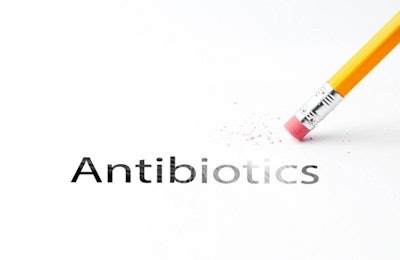
The struggle to reduce total antibiotic usage in animal agriculture continues worldwide. This includes not only the banned antibiotics that were used for growth-promoting reasons, but also those needed for therapeutic reasons. In fact, the latter is a very active project throughout the European Union, albeit some countries are more enthusiastic than others, whereas in the United States, there is a trend to raise animals without antibiotics — no matter what happens to them.
In general, we can safely say that the drive to reduce antibiotic usage in animal production will continue and even increase in the coming years. To this end, a brief roadmap is presented below as an example to help any farm that would like to take this path. It is not the only one, and it is not the procedure that guarantees success, but rather the dedication of the staff, and the availability of resources.
Step 1: Biosecurity
Goal: To reduce dependence on antibiotics so that alternatives will have a higher chance of success
Means: By increasing overall health status, farm biosecurity and stricter protocols of hygiene
Personnel: Veterinarian(s) and farm personnel
Time frame: 12 to 18 months to see first tangible results like improved animal performance
Success: 50 percent — in my opinion, this is the step most farms fail to initiate or complete
Cost: Highest
Step 2: Immunity
Goal: To further reduce dependence on antibiotics by increasing animal resistance to pathogens in their environment
Means: By enhancing the animal’s immune system at a farm level, using vaccines and other in-feed or in-water substances (additives) that boost immunity and oxidation resistance
Time frame: 6 months to see first results (blood indexes)
Personnel: Veterinarian(s), nutritionist(s) and farm personnel
Cost: High
Step 3: Reformulation
Goal: Reformulation of all diets to take advantage of improved farm health status and enhanced animal immunity
Means: By adjusting feed nutrients and ingredients to allow animals to take advantage of the above improved conditions
Time frame: 3 months to see first results, but it cannot be completed before the first two steps are completed
Personnel: Nutritionist(s)
Cost: Minimal or improved profitability due to increased animal performance
Step 4: Additives
Goal: Explore additives that enhance the value of the above restructured feeds
Means: By experimentation, research and consulting with your network
Time frame: Indefinitely, as new additives keep emerging, so it is always best to keep checking existing formulas every six months
Personnel: Veterinarian(s) and nutritionist(s)
Cost: High if in-house research is needed, minimal if trusted partners are used, improved profitability if the right combination is found
Step 5: Review
Goal: To further reduce/remove antibiotic usage
Means: By repeating steps 1 through 4 above
Time frame: A 2-3 year repetitive plan should be established until goal is reached
Personnel: All
Cost: Diminishing, as less measures will need to be implemented
It is evident that this is not an easy test as it involves time, effort, labor and, of course, money. But there is no magic or quick solution of removing antibiotics and adding another product in their place. Perhaps such a solution will exist in the future, but currently, the long road is the only way to safely reduce antibiotic usage.
If everything is done correctly, the initial high investment will be returned in multiples as performance will increase. Finding the right balance is a fine exercise, and for this you need to have the right partners and the right farm personnel dedicated to this high goal.
Most farms fail to reduce antibiotic use, or reduce it and accept a drop in animal performance because they still adhere to the original claim that one or many additives will replace antibiotics. On high-health farms, in which Steps 1 and 2 above are already part of their production routine, the replacement of antibiotics with some additives works. On those farms, which relied in the past on heavy use of antibiotics to make up for inadequate adherence to Steps 1 and 2, additives are not so successful, or they need to spend too much on them to make animals perform at least satisfactorily.
The correct way is always the difficult one.
Learn more: 7 antibiotic-free feeding practices beyond additives
www.WATTAgNet.com/articles/28457

















